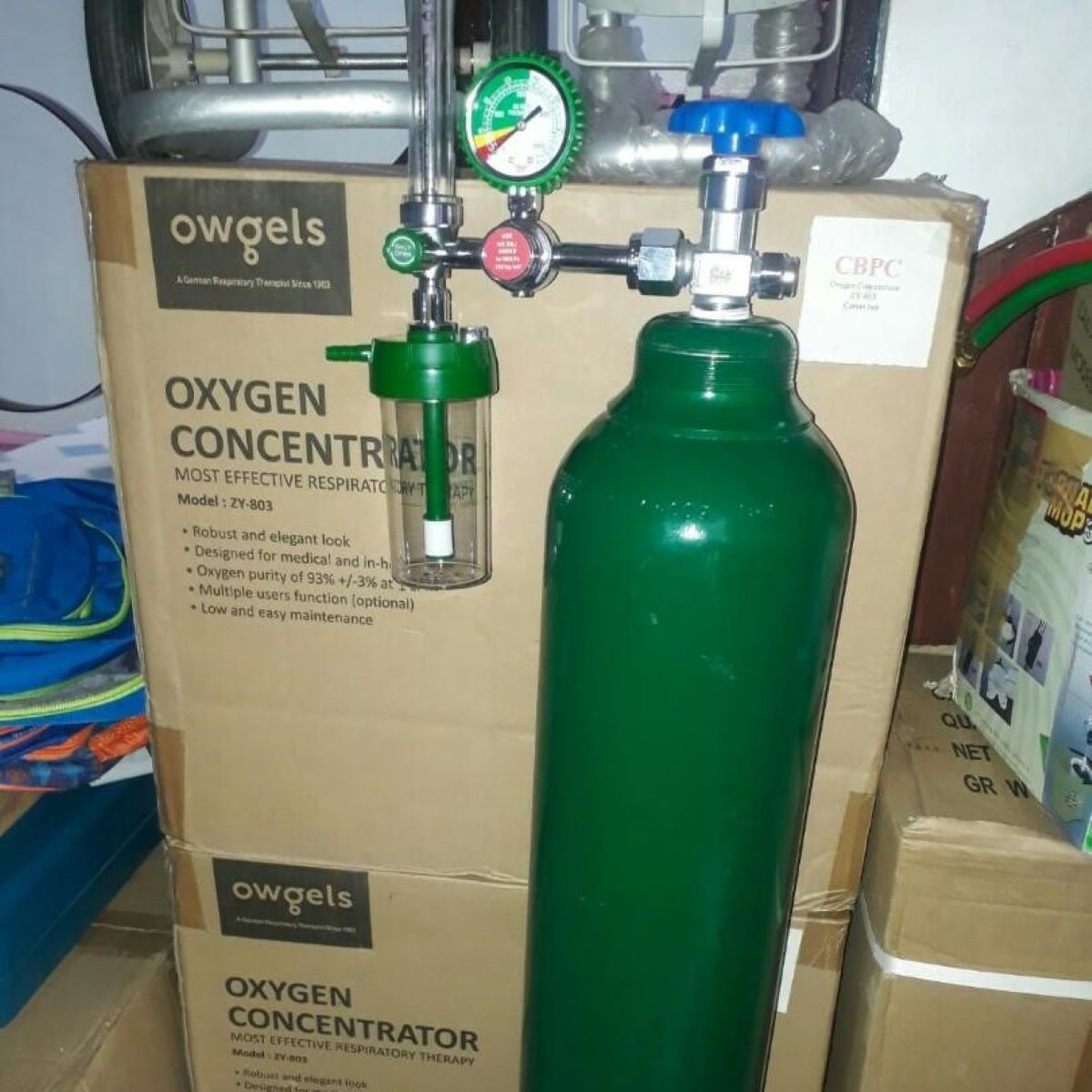

Articles
How To Store Oxygen Tanks At Home
Modified: December 7, 2023
Learn the best practices for storing oxygen tanks safely at home with our informative articles. Ensure the proper storage and maintenance to guarantee safety and peace of mind.
(Many of the links in this article redirect to a specific reviewed product. Your purchase of these products through affiliate links helps to generate commission for Storables.com, at no extra cost. Learn more)
Introduction:
Storing oxygen tanks properly at home is crucial for the safety and well-being of individuals who rely on them for respiratory support. Whether you or a loved one requires supplemental oxygen therapy, it is essential to understand the importance of proper storage to ensure the integrity and functionality of the tanks. In this article, we will explore the key considerations for storing oxygen tanks at home, including safety precautions, choosing an appropriate storage location, cleaning and preparing the storage area, as well as monitoring and maintaining the tanks. By following these guidelines, you can help prolong the lifespan of the oxygen tanks and mitigate potential risks.
Key Takeaways:
- Properly storing oxygen tanks at home is crucial for safety, effectiveness, and emergency readiness. Following safety considerations, choosing suitable storage locations, and regular maintenance are essential for individuals relying on oxygen therapy.
- Emergency preparedness, including backup supplies, evacuation plans, and fire safety precautions, is vital for those using oxygen tanks at home. Prioritizing safety and staying informed about proper storage and maintenance practices ensures peace of mind for patients and caregivers.
Read more: How To Store Oxygen Cylinders
Importance of Proper Oxygen Tank Storage:
Proper storage of oxygen tanks is paramount for several reasons. First and foremost, storing oxygen tanks safely reduces the risk of accidents or injuries. Oxygen is a highly combustible gas, and mishandling or improper storage can result in fire hazards. Additionally, oxygen tanks contain high-pressure gas, which can pose a risk if they are not stored securely.
Moreover, the integrity of the oxygen tanks plays a crucial role in ensuring the effectiveness of oxygen therapy. Oxygen tanks need to be stored in a way that preserves their cleanliness and prevents damage. Any contamination or damage to the tanks can compromise the purity of the oxygen and affect its therapeutic benefits.
Furthermore, by storing oxygen tanks properly, you can minimize the likelihood of leakage or loss of oxygen. This not only helps maintain the prescribed flow rate but also ensures that the tanks last longer before needing to be replenished or replaced. Proper storage can contribute to cost savings and fewer disruptions in oxygen therapy.
Lastly, proper oxygen tank storage aids in emergency preparedness. By organizing and maintaining a well-kept storage area, you can quickly access the tanks during an emergency situation. This is particularly vital for individuals who rely on oxygen therapy to manage their health conditions. Having easy access to functional and properly stored oxygen tanks can be a lifesaver in critical moments.
Overall, the importance of proper oxygen tank storage cannot be overstated. It is crucial for both the safety and well-being of individuals who require oxygen therapy. By following the appropriate storage guidelines and safety considerations, you can mitigate potential risks, enhance the efficacy of oxygen therapy, and ensure readiness for any unforeseen emergencies.
Safety Considerations for Storing Oxygen Tanks at Home:
When it comes to storing oxygen tanks at home, prioritizing safety is of utmost importance. Here are some key safety considerations to keep in mind:
1. Ventilation: Ensure proper ventilation in the storage area to prevent the accumulation of oxygen gas. Adequate airflow helps disperse any potential leaks and reduces the risk of oxygen concentration build-up.
2. No Smoking: Absolutely no smoking should be allowed near the storage area or anywhere oxygen tanks are present. Oxygen supports combustion, and even a small spark from a cigarette or open flame can ignite the gas, leading to a fire or explosion.
3. Fire Safety: Install smoke detectors and fire extinguishers in the vicinity of the storage area. Regularly check the functionality of these devices and have a well-rehearsed fire escape plan.
4. Temperature Control: Oxygen tanks should be stored in a cool, dry area away from direct sunlight and extreme temperatures. Heat can increase pressure in the tanks, while cold temperatures can reduce the effectiveness of the oxygen. Aim for a storage temperature between 50°F and 80°F (10°C-27°C).
5. Proper Handling: Always exercise caution when moving or transporting oxygen tanks. Secure them in an upright position to prevent tipping or damage, and avoid dropping or banging them against surfaces.
6. Protective Equipment: If handling oxygen tanks involves opening valves or fittings, wear protective gear such as gloves and goggles to minimize the risk of injury.
7. Keep Away from Flammable Materials: Store oxygen tanks away from flammable substances such as oils, grease, solvents, and aerosol cans. These materials can ignite easily and increase the potential for fire or explosion.
8. No Oil or Grease: Do not apply oil or grease to any part of the oxygen tank or its fittings, as these substances can react with oxygen and cause ignition.
9. Secure Storage Area: Prevent unauthorized access to the storage area, especially by children or individuals unfamiliar with oxygen therapy. Oxygen tanks should be kept out of reach and locked if necessary.
10. Regular Inspection: Regularly inspect the tanks for signs of damage, corrosion, or leaks. If any issues are detected, contact the oxygen supplier or healthcare provider immediately for further guidance.
By adhering to these safety considerations, you can significantly reduce the risks associated with storing oxygen tanks at home. Remember, safety should always be the top priority when it comes to managing oxygen therapy and ensuring the well-being of individuals who rely on it.
Choosing an Appropriate Storage Location:
Selecting the right storage location for your oxygen tanks is crucial to ensure their safety and longevity. Here are some factors to consider when choosing an appropriate storage location:
1. Well-Ventilated Area: Opt for a well-ventilated space to store your oxygen tanks. Good air circulation helps prevent the build-up of oxygen gas, reducing the risk of flammability and making it easier to detect any leaks.
2. Non-Combustible Environment: Choose a storage area that is free from flammable materials, such as gasoline, paint thinners, or cleaning agents. Avoid storing the tanks near open flames, space heaters, or electrical outlets to minimize the risk of fire hazards.
3. Away from Heat Sources: Keep oxygen tanks away from direct sunlight and any heat sources, including radiators or stoves. Heat can increase pressure within the tanks, potentially causing them to rupture or leak.
4. Secure and Stable Surface: Ensure the storage area has a stable, flat surface to prevent the tanks from tipping or falling. Avoid storing them on uneven floors or areas where they may be easily knocked over.
5. Avoid Moisture: It is important to select a storage location that is dry and free of moisture. High humidity can lead to corrosion and compromise the integrity of the tanks. Avoid basements or damp areas that may promote the growth of mold or mildew.
6. Accessibility: Choose a storage location that allows for easy access and convenience. In the event of an emergency or when it is time for tank replacement, you should be able to reach the tanks quickly without any obstacles.
7. Distance from Electrical Appliances: Keep your oxygen tanks a safe distance away from electrical appliances or equipment that could generate sparks. This includes power tools, electrical panels, or any machinery that may produce an arc or electrical discharge.
8. Consider Tank Size: Consider the size and number of tanks you need to store and choose a storage location that can accommodate them all comfortably. Ensure that there is enough space for easy maneuverability and that the tanks do not obstruct walkways or doorways.
9. Labeling: Clearly label the storage area as “Oxygen Storage” or use appropriate signage to indicate the presence of oxygen tanks. This helps prevent confusion and ensures that the area is easily identifiable in case of an emergency.
Remember, when choosing an appropriate storage location for your oxygen tanks, prioritize safety and accessibility. By storing your tanks in a suitable environment, you can ensure their longevity and maintain the highest level of safety for yourself or your loved ones who depend on oxygen therapy.
Cleaning and Preparing the Storage Area:
Maintaining a clean and well-prepared storage area for your oxygen tanks is essential to ensure their integrity and safety. Here are some steps to follow when cleaning and preparing the storage area:
1. Clear the Space: Start by removing any clutter or unnecessary items from the storage area. Ensure there is enough space to accommodate the oxygen tanks and allow for easy access.
2. Dust and Debris Removal: Thoroughly clean the storage area to remove dust, dirt, and debris. Use a damp cloth or vacuum cleaner to clean the floors, walls, and surfaces. Pay attention to areas where dust may accumulate, such as corners and shelves.
3. Avoid Chemicals: Avoid using cleaning agents or chemicals that could react with the oxygen tanks or emit fumes. Use mild, non-abrasive cleaners or simply water and soap solution to clean the storage area.
4. Dry the Area: After cleaning, ensure that the storage area is completely dry before placing the oxygen tanks. Moisture can lead to corrosion and compromise the integrity of the tanks. Use fans or open windows to promote airflow and speed up the drying process if necessary.
5. Organize the Space: Arrange the storage area in an organized manner. Use shelves, racks, or storage containers to keep the oxygen tanks secure and prevent them from toppling over. Label each storage unit or container for easy identification.
6. Separation from Other Items: Keep the oxygen tanks separate from other items stored in the area. Avoid stacking them on top of each other or placing heavy objects on top of them. This helps prevent damage to the tanks and ensures easy access when needed.
7. Check for Leaks: Before placing the oxygen tanks in the storage area, inspect them for any signs of leaks or damage. If you detect any leaks or issues, contact your oxygen supplier or healthcare provider immediately for assistance.
8. Regular Maintenance: Regularly maintain and clean the storage area to ensure its cleanliness and organization. Conduct routine checks of the storage area to ensure it remains dry, well-ventilated, and free from any potential hazards.
Remember, maintaining a clean and properly prepared storage area is crucial for the safety and functionality of your oxygen tanks. By following these cleaning and preparation steps, you can help prolong the lifespan of your tanks and ensure a secure storage environment for your oxygen therapy needs.
Store oxygen tanks in a well-ventilated area away from heat sources and direct sunlight. Keep them upright and secure to prevent tipping. Avoid storing near flammable materials.
Read more: How To Store Oxygen Absorbers
Storing Oxygen Tanks Safely:
Proper storage techniques are essential to ensure the safe and effective use of oxygen tanks at home. Here are some guidelines to follow when storing oxygen tanks:
1. Upright Position: Store oxygen tanks in an upright position at all times. This allows for the proper functioning of the pressure relief valve and prevents leakage or damage to the tank.
2. Secure in Place: Use sturdy tank holders, brackets, or stands to secure the oxygen tanks in place. This prevents them from falling or tipping over, reducing the risk of injuries and damage.
3. No Obstacles: Keep the area around the oxygen tanks clear of any obstacles or clutter. Ensure that the tanks are not obstructing walkways or doorways, making it easy to access them when needed.
4. Proper Distance: Store oxygen tanks away from any sources of heat, open flames, or electrical equipment that could generate sparks. Maintain a safe distance from radiators, stoves, power tools, and any machinery that may produce an arc or electrical discharge.
5. Avoid Direct Sunlight: Protect oxygen tanks from direct sunlight, as it can increase the temperature within the tank and compromise the integrity of the gas inside. Place the tanks in a shaded area to prevent excessive heat exposure.
6. Keep Dry: Ensure that the storage area for oxygen tanks is dry and free from moisture. Moisture can lead to rust or corrosion, compromising the structural integrity of the tanks.
7. Organize by Expiry Date: If you have multiple oxygen tanks, organize them based on their expiry dates. Use the oldest tanks first to ensure rotation and prevent any tanks from expiring unused.
8. Label and Mark: Clearly label your storage area as “Oxygen Storage” or use specific signage to indicate the presence of oxygen tanks. This helps prevent confusion and ensures that the area is easily identifiable during emergencies.
9. Limit Quantity: Avoid storing excessive quantities of oxygen tanks at home. It is essential to have an adequate supply, but storing too many tanks can increase the risk of accidents and may not comply with local regulations.
10. Regular Inspection: Regularly inspect the oxygen tanks for signs of damage, corrosion, or leaks. If any issues are detected, contact your oxygen supplier or healthcare provider immediately for assistance.
By adhering to these guidelines, you can ensure the safe storage of oxygen tanks at home. Remember, proper storage not only helps protect your investment but also safeguards the health and well-being of those who rely on oxygen therapy.
Monitoring and Maintaining Oxygen Tanks:
Monitoring and maintaining oxygen tanks is crucial to ensure their safety, effectiveness, and longevity. By following these guidelines, you can prolong the lifespan of the tanks and maintain optimal oxygen therapy. Here are some key steps to consider:
1. Regular Inspection: Inspect the oxygen tanks regularly for signs of damage, such as dents, cracks, or corrosion. Any issues should be reported to your oxygen supplier or healthcare provider immediately. Regular inspections help identify potential problems early on and prevent further damage.
2. Check Pressure Gauges: Familiarize yourself with the pressure gauges on the oxygen tanks. Monitor the pressure levels regularly and ensure they are within the prescribed range. Contact your healthcare provider if you notice any significant deviations or fluctuations in pressure.
3. Storage Environment: Monitor the storage environment for the oxygen tanks. Ensure that the temperature remains within the recommended range (between 50°F and 80°F or 10°C-27°C). Keep an eye on humidity levels and address any issues promptly to prevent moisture-related damage.
4. Replace Seals and O-Rings: Over time, the seals and O-rings on the oxygen tanks may wear out or become damaged. Regularly inspect these components and replace them as needed to maintain a proper seal and prevent leaks.
5. Cleaning and Sanitizing: Clean the exterior of the oxygen tanks regularly to remove any dust or debris. Use a mild soap solution or a recommended oxygen-safe cleaner. Avoid using harsh chemicals or solvents that may compromise the integrity of the tanks.
6. Avoid Overfilling: Do not overfill the oxygen tanks. Consult the manufacturer’s guidelines or your healthcare provider to determine the appropriate fill level. Overfilling can lead to increased pressure and potential safety risks.
7. Follow Manufacturer Recommendations: Refer to the manufacturer’s guidelines for specific maintenance instructions. Follow recommended procedures for routine maintenance, including cleaning, checking valves, and replacing parts. Adhering to these instructions helps ensure the proper functioning of the tanks.
8. Stay Connected with Healthcare Providers: Maintain regular communication with your oxygen supplier and healthcare provider. They can provide guidance on proper maintenance and help address any concerns or issues related to your oxygen tanks.
9. Educate Yourself: Take the time to educate yourself about the specific type of oxygen tanks you are using. Learn about their features, proper usage, and maintenance requirements. The more informed you are, the better equipped you will be to monitor and maintain your oxygen tanks effectively.
10. Keep Records: Keep a record of maintenance activities, inspections, and any issues encountered with your oxygen tanks. This documentation can be useful for future reference and can help identify any patterns or recurring problems.
By monitoring and maintaining your oxygen tanks regularly, you can ensure their reliability, performance, and safety. A proactive approach to maintenance helps maximize the benefits of oxygen therapy and provides peace of mind for both patients and caregivers.
Emergency Preparedness for Oxygen Tank Storage:
Emergency preparedness is crucial when it comes to storing oxygen tanks at home. Being well-prepared ensures that you can respond effectively in case of any unforeseen events or emergencies. Here are some important considerations for emergency preparedness:
1. Knowledge of Emergency Procedures: Familiarize yourself with emergency procedures specific to your oxygen therapy and storage. Understand how to safely shut off the oxygen supply and disconnect the equipment when necessary. Also, ensure that other household members are aware of these procedures.
2. Emergency Contacts: Keep a list of emergency contacts readily available. This should include the contact information for your oxygen supplier, healthcare provider, and local emergency services. In case of an emergency, such as a fire or sudden loss of oxygen supply, you can quickly seek assistance.
3. Backup Oxygen Supply: It is advisable to have a backup oxygen supply in case of any disruptions or malfunctions. This can include portable oxygen concentrators or spare oxygen tanks. Regularly check the expiration dates of backup supplies and replace them as needed.
4. Backup Power Source: If you rely on electric-powered oxygen concentrators, consider having a backup power source, such as a generator or battery backup system. This ensures that your oxygen supply remains uninterrupted during power outages.
5. Emergency Evacuation Plan: Create and practice an emergency evacuation plan with your household members. Identify primary and alternative exit routes, as well as a designated meeting point outside the house. Ensure that everyone is aware of the plan, especially if they are responsible for assisting you with oxygen therapy.
6. Communication Devices: Keep communication devices, such as a charged mobile phone or a landline telephone, easily accessible near your oxygen storage area. These devices will enable you to call for help during an emergency.
7. Fire Safety Precautions: Implement fire safety precautions in your home. Install smoke detectors in the vicinity of the oxygen storage area and throughout your residence. Regularly check the functionality of these detectors and replace batteries as needed.
8. Fire Extinguishers: Keep a fire extinguisher that is suitable for oxygen-related fires in an easily accessible location. Ensure that you and your household members understand how to use the fire extinguisher correctly.
9. Education and Training: Consider undergoing CPR and first aid training. This knowledge can be invaluable in emergency situations not only for yourself but also for others in need.
10. Regular Emergency Drills: Conduct regular emergency drills to practice your evacuation plan and emergency procedures. This will help ensure that everyone understands their roles and responsibilities during an actual emergency.
By implementing these emergency preparedness strategies, you can be equipped to handle unforeseen events and safeguard the well-being of yourself and your loved ones who rely on oxygen therapy at home. Remember, early preparation and proactive measures significantly contribute to a safer living environment.
Conclusion:
Proper storage of oxygen tanks is essential for the safety, effectiveness, and longevity of these vital medical devices. By following the guidelines and considerations discussed in this article, you can ensure the well-being of individuals who rely on oxygen therapy at home.
From understanding the importance of storing oxygen tanks safely to choosing an appropriate storage location, cleaning and preparing the storage area, and monitoring and maintaining the tanks, each step plays a critical role in maintaining their integrity and functionality.
Safety considerations, such as proper ventilation, avoiding smoking near the storage area, and keeping oxygen tanks away from heat sources and flammable materials, significantly reduce the risk of accidents and fires. Additionally, regularly inspecting the tanks, monitoring pressure levels, and ensuring proper cleaning and maintenance contribute to their longevity and effectiveness.
Emergency preparedness is also a crucial aspect of oxygen tank storage. Being knowledgeable about emergency procedures, having backup supplies and power sources, and having an evacuation plan in place can make a significant difference in responding to unforeseen events.
By adhering to these guidelines, individuals can confidently and safely manage oxygen therapy at home. Consulting with healthcare providers and oxygen suppliers for specific recommendations and staying educated about the equipment being used further enhances the overall storage and usage experience.
Remember, proper storage and maintenance of oxygen tanks not only ensure safety but also provide peace of mind to patients and their caregivers. By creating a well-organized and secure storage area, individuals can have easy access to functional oxygen tanks, allowing them to maintain and improve their quality of life.
In conclusion, prioritizing safety, choosing appropriate storage locations, regularly monitoring and maintaining oxygen tanks, and being prepared for emergencies are fundamental in ensuring the safe and effective use of these critical medical devices. By implementing these practices, individuals can confidently navigate their oxygen therapy journey and focus on their overall health and well-being.
Frequently Asked Questions about How To Store Oxygen Tanks At Home
Was this page helpful?
At Storables.com, we guarantee accurate and reliable information. Our content, validated by Expert Board Contributors, is crafted following stringent Editorial Policies. We're committed to providing you with well-researched, expert-backed insights for all your informational needs.
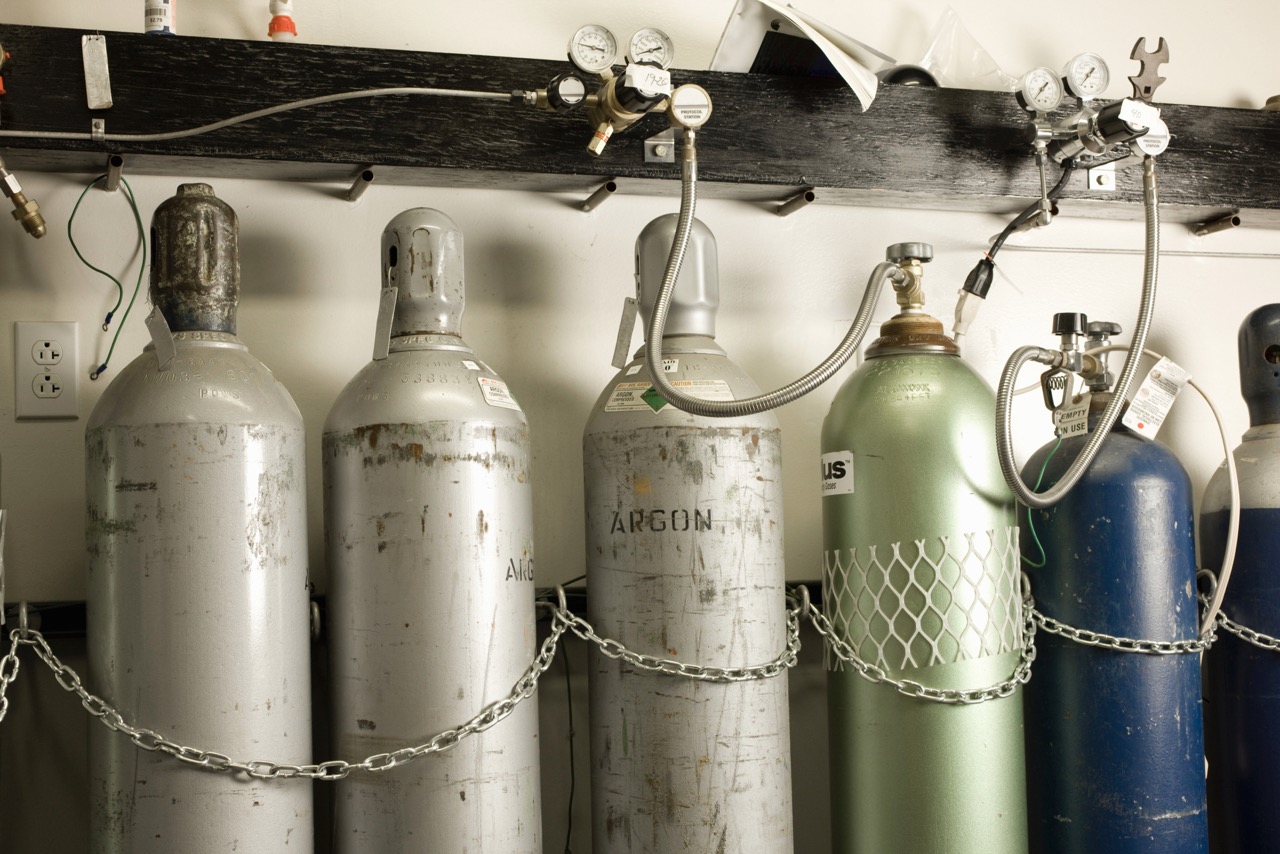
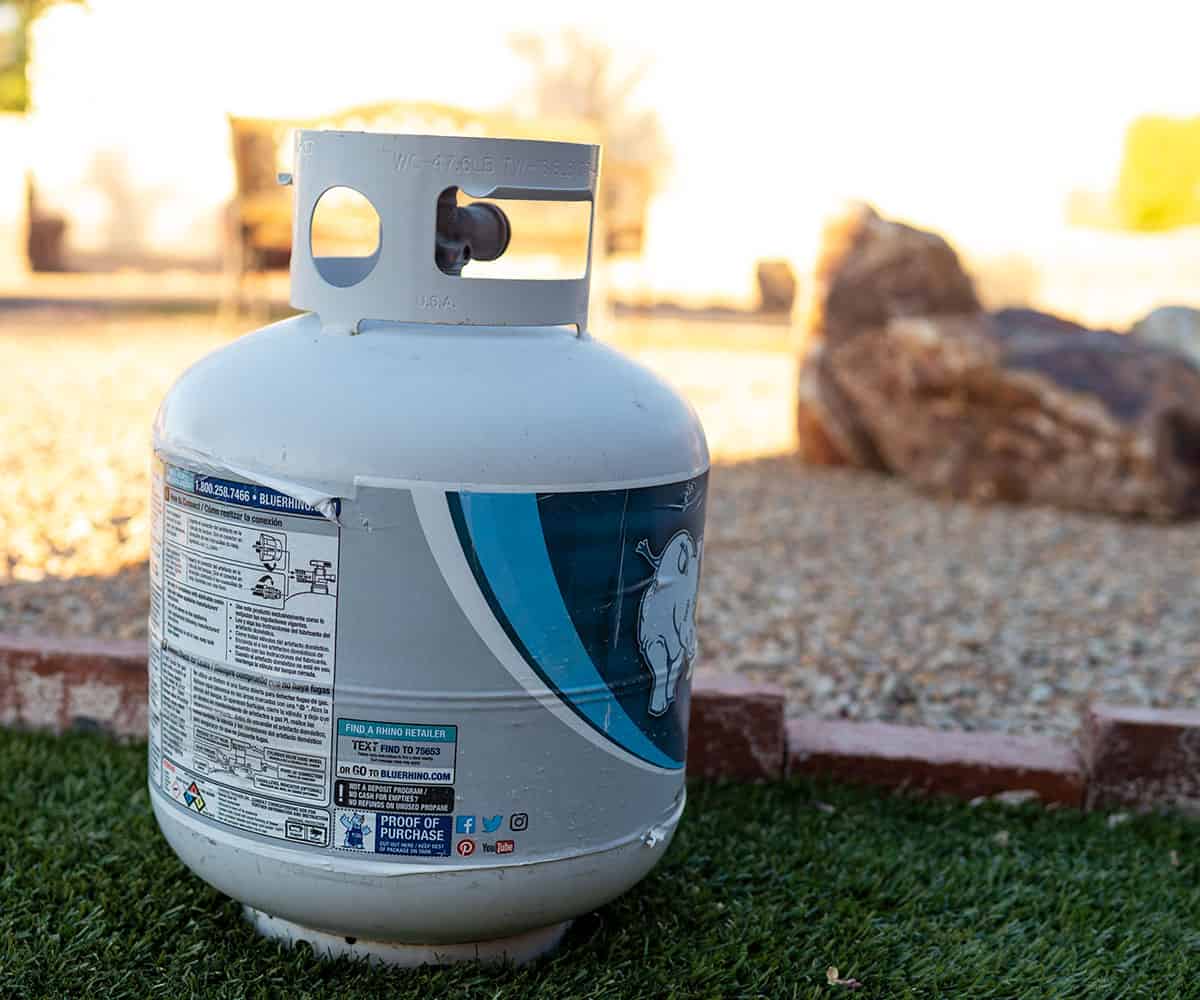

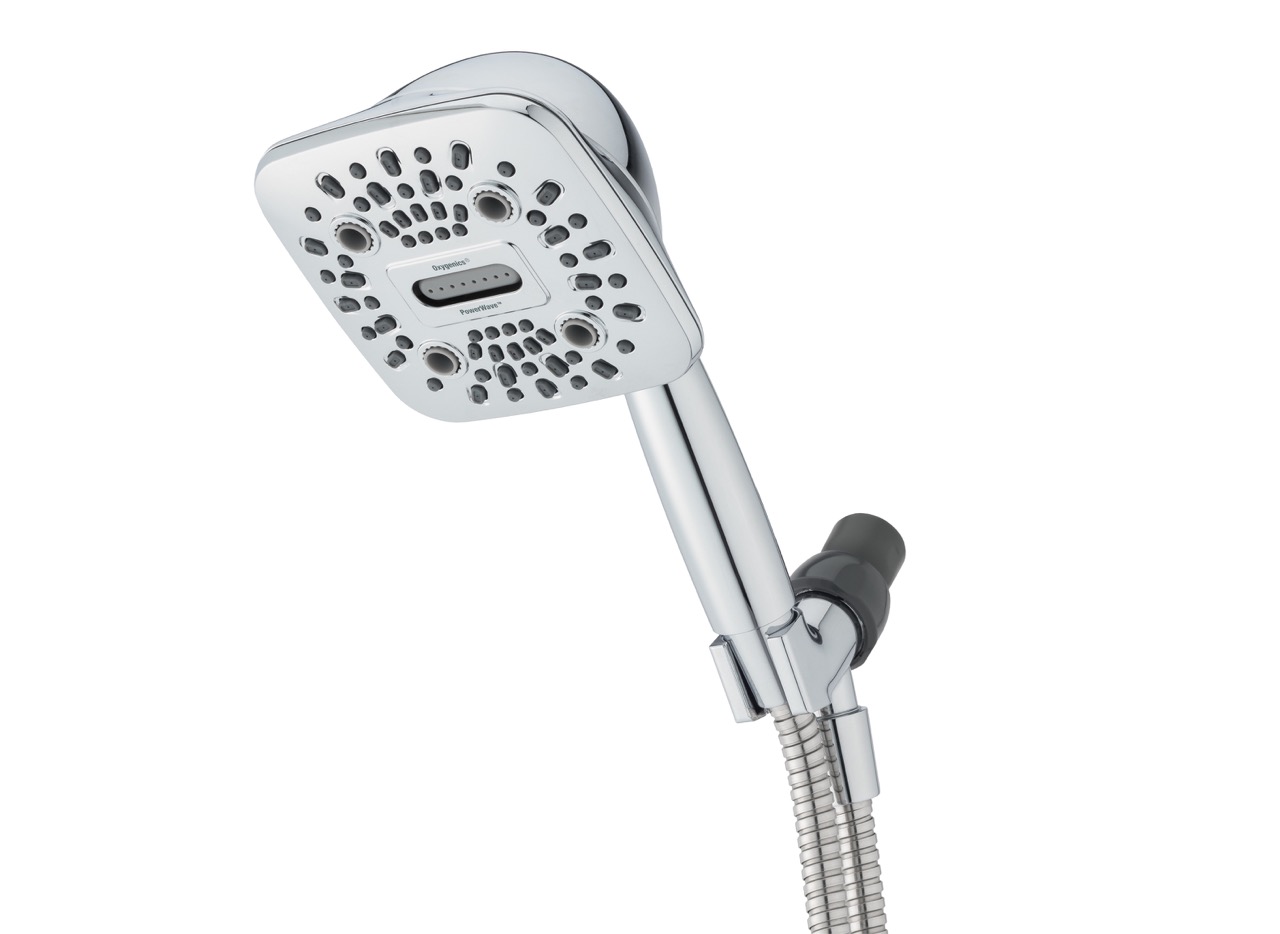
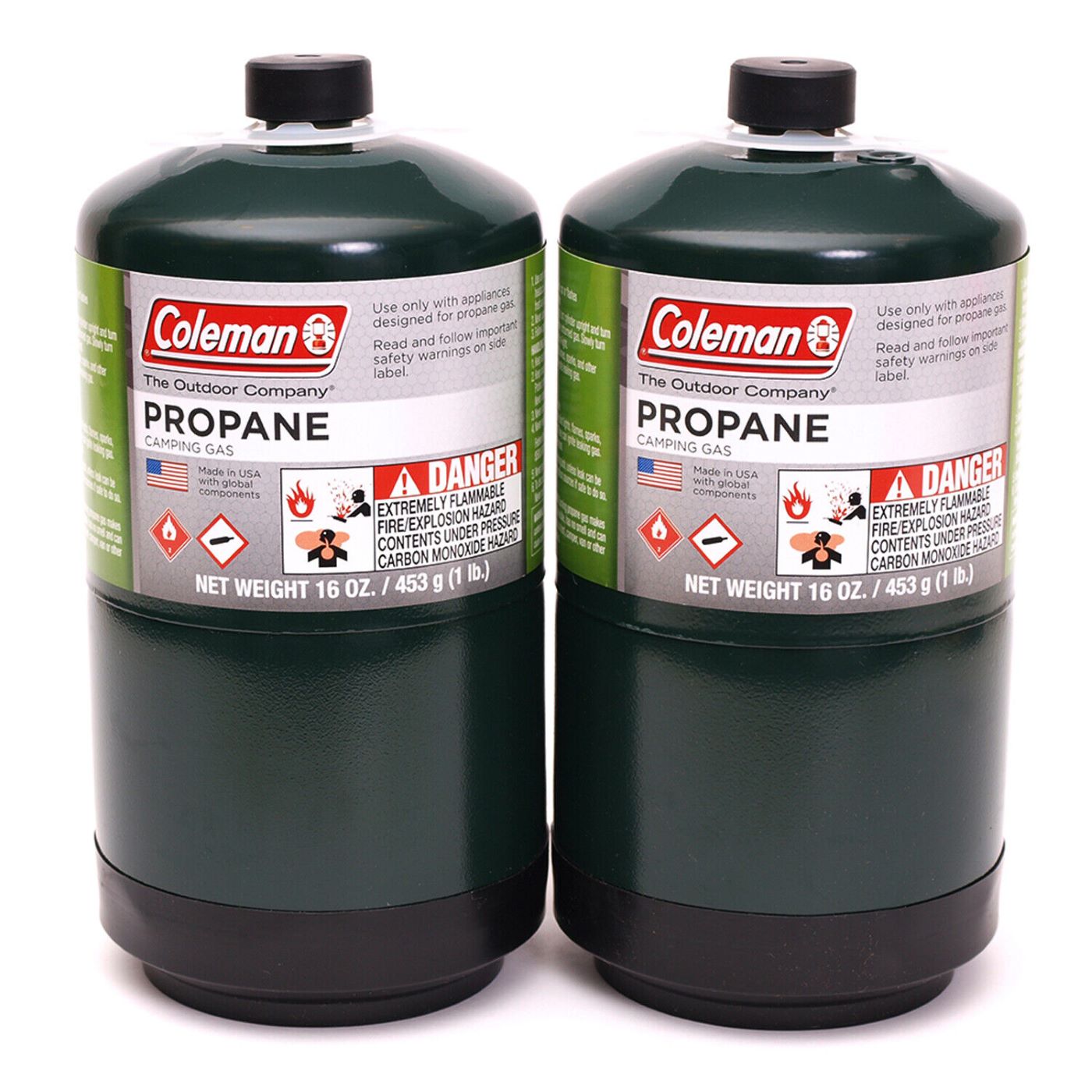



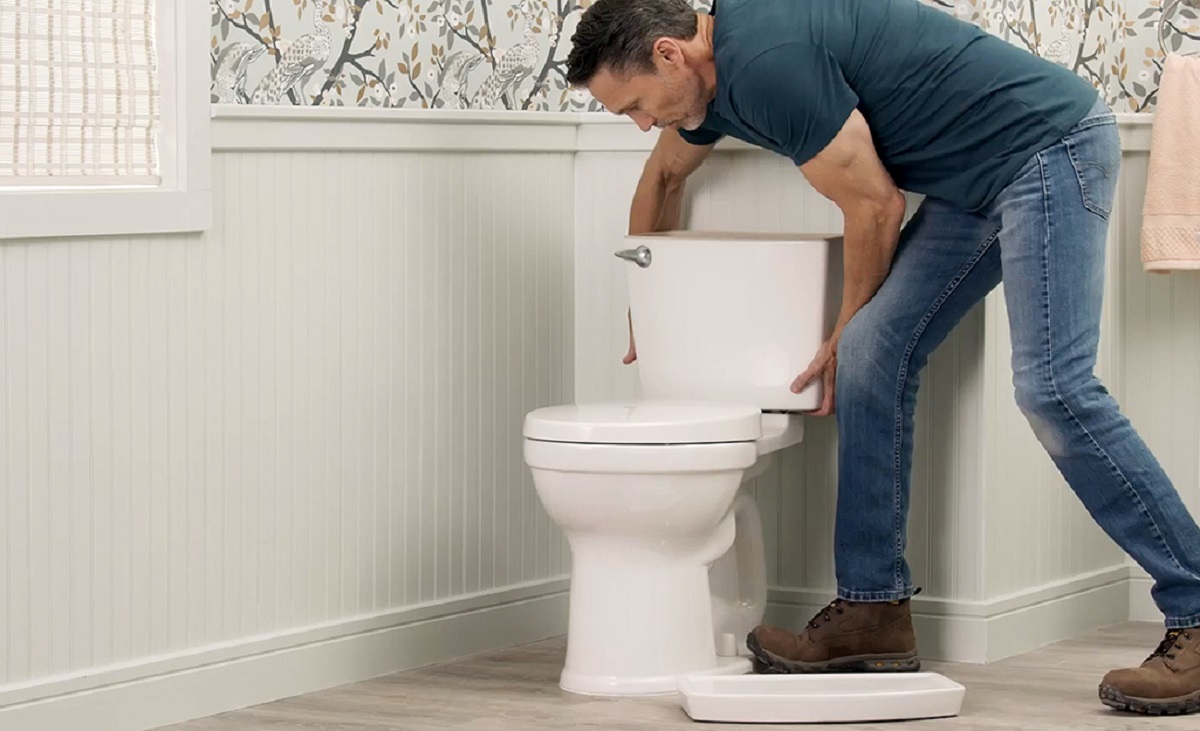



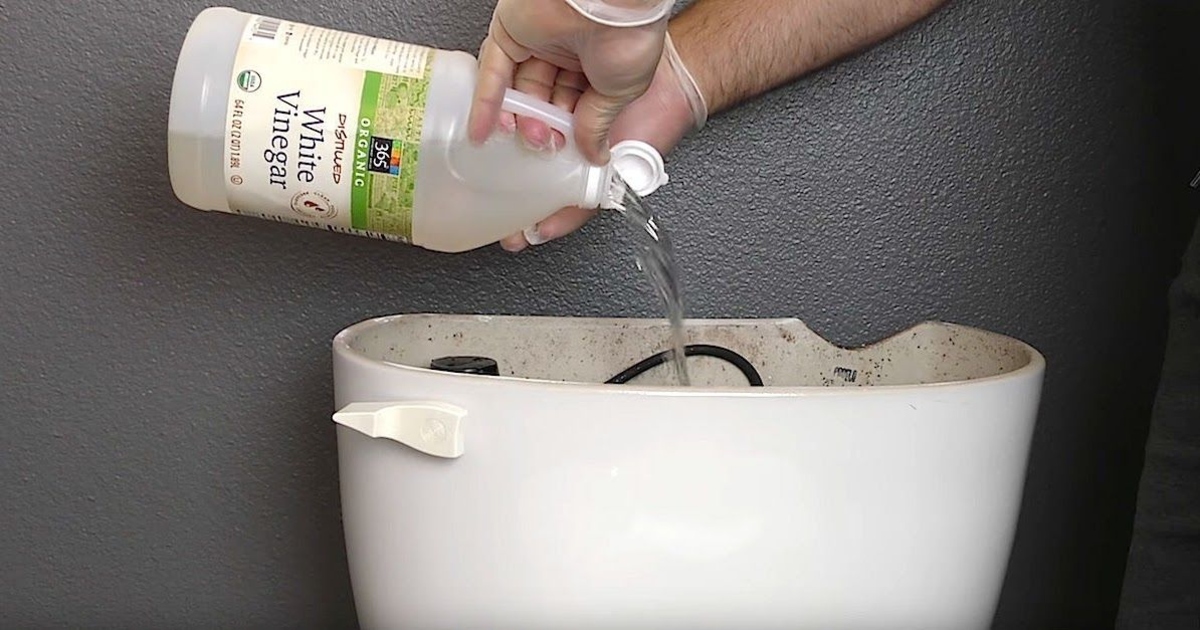
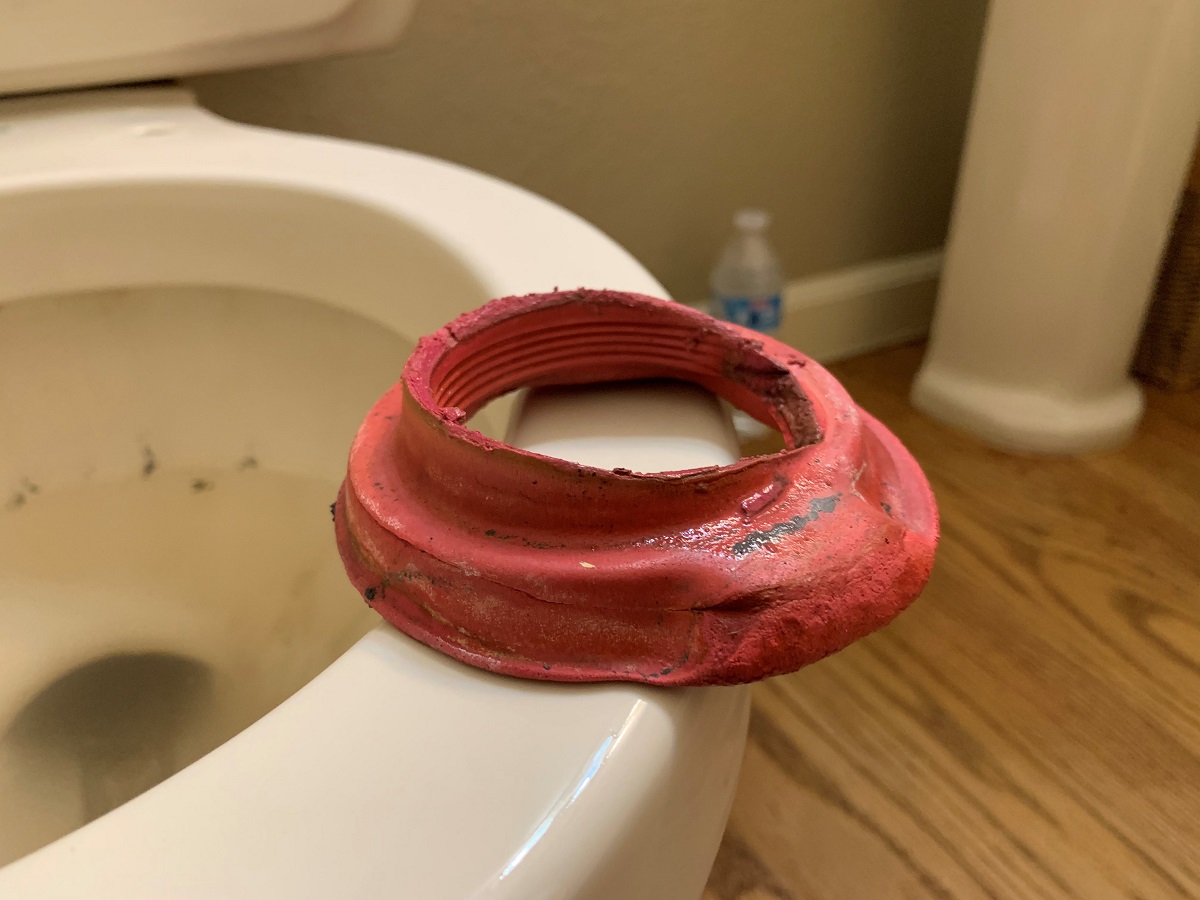

0 thoughts on “How To Store Oxygen Tanks At Home”